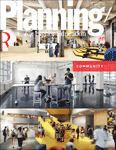- Integrated Planning
Integrated Planning
Integrated planning is a sustainable approach to planning that builds relationships, aligns the organization, and emphasizes preparedness for change.
- Topics
Topics
- Resources
Resources
Featured Formats
Popular Topics
- Events & Programs
Events & Programs
Upcoming Events
- Building Buy-in for Planning: Dealing With Resistance and Gaining Support
Online | March 11 – April 8 - Budgeting for Impact: A Working Group on Resource Planning in Higher Education
Online | Feb 5, Feb 19, March 5 - Cross-Functional Collaboration: Tools and Skills for Working Across Silos
Online | February 10, 17, 24
- Building Buy-in for Planning: Dealing With Resistance and Gaining Support
- Community
Community
The SCUP community opens a whole world of integrated planning resources, connections, and expertise.
- Integrated Planning
Integrated Planning
Integrated planning is a sustainable approach to planning that builds relationships, aligns the organization, and emphasizes preparedness for change.
- Topics
Topics
- Resources
Resources
Featured Formats
Popular Topics
- Events & Programs
Events & Programs
Upcoming Events
- Building Buy-in for Planning: Dealing With Resistance and Gaining Support
Online | March 11 – April 8 - Budgeting for Impact: A Working Group on Resource Planning in Higher Education
Online | Feb 5, Feb 19, March 5 - Cross-Functional Collaboration: Tools and Skills for Working Across Silos
Online | February 10, 17, 24
- Building Buy-in for Planning: Dealing With Resistance and Gaining Support
- Community
Community
The SCUP community opens a whole world of integrated planning resources, connections, and expertise.
 Planning for Higher Education Journal
Planning for Higher Education JournalPlanning for Science, Technology, Engineering, and Math (STEM) Retention
Understanding the Implications of the Theory of Planned Behavior From Volume 43 Number 4 | July–September 2015By Laura G. Foltz, Charles B. Foltz, Stephanie L. KirschmannChallenges: Student Success, Retention, and Graduation
From Volume 43 Number 4 | July–September 2015By Laura G. Foltz, Charles B. Foltz, Stephanie L. KirschmannChallenges: Student Success, Retention, and GraduationThis study uses the Theory of Planned Behavior (TPB) in explaining the intent to graduate of students in introductory chemistry courses. Retention studies focus on interactional theories and high-impact practices such as student integration, student engagement through research experiences, student-faculty mentor relationships, and peer tutoring; however, these studies fail to provide a theoretical model to explain and predict student behavior. Findings echo the importance of relationships with peers, faculty, and staff and suggest that subjective norms (positive peer pressure) influence student intentions. Perceived behavioral control and attitudes play a less significant role, but may be part of a STEM retention strategy. This framework assists planners in examining current programs for improvement opportunities and identifying other initiatives to help retain STEM students. Future studies should examine the use of this model for predicting retention and staging interventions to retain STEM students.
MEMBERS ONLY
Attention Members: Log in to access this item.Not a member? Join now to access this article and all journal articles for free. - Topics
- Topics


